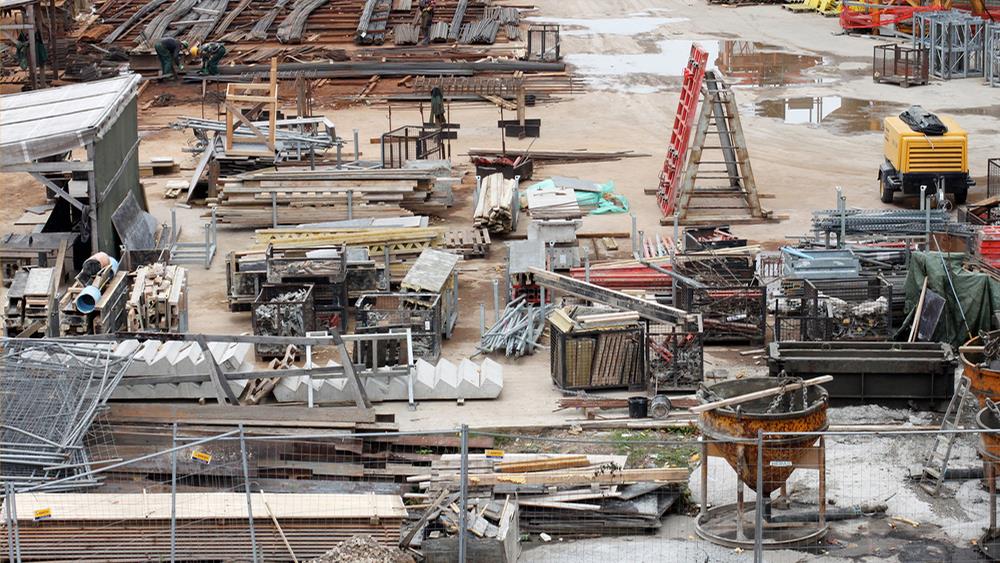

Total construction output is now only forecast to grow by 1.1% in 2025 and 2.8% in 2026, which is a significant revision down from the 1.9% in 2025 and 3.7% in 2026 in the previous forecast.
The Construction Products Association’s Autumn Forecasts, published today (Monday 27 October), reveal that growth expectations for construction output have been revised substantially down amid growing risks and uncertainty surrounding the government’s impending tax rises in the Autumn Budget and their impact on the wider UK economy. Total construction output is now only forecast to grow by 1.1% in 2025 and 2.8% in 2026, which is a significant revision down from the 1.9% in 2025 and 3.7% in 2026 in the previous forecast.
Firms from across the construction supply chain are reporting that activity has slowed since the Spring, particularly in private housing, infrastructure roads, and commercial new build offices. Confidence among homebuyers, homeowners, and investors is weak; this has been exacerbated by uncertainty over the upcoming Autumn Budget and who will bear the brunt of the inevitable tax increases and potential spending cuts. The CPA has taken account of the pre-Budget uncertainty in its latest forecasts but, like all economic forecasters, will not be able to take account of the tax rises and spending cuts until they are confirmed on
26 November.
In private housing, which is the largest sector of construction, output is forecast to rise by 2.0% in 2025 and 4.0% in 2026, a revision down from the previous forecast of 4.0% in 2025 and 7.0% in 2026. After large falls in demand between 2022 and 2024, house builders continue to highlight that demand and affordability remain the biggest challenges in areas of the country where house prices are higher, even as interest and mortgage rates have fallen. Conversely, in parts of the country in which house prices are more affordable, site viability is a key problem due to the long list of additional costs that government continues to add to house building. In addition, high-rise developers continue to suffer from delays at Gateways 2 and 3, both for new build and changes in use from commercial developments to residential flats.
In private housing repair, maintenance and improvement (rm&i), despite sustained real wage growth, many households have continued to save rather than spend given the scarring effects of the ‘cost of living’ crisis. A sustained recovery in private housing rm&i will only occur when homeowners felt confident enough to commit to large, discretionary spending such as home extensions and renovations. This is unlikely to be before the Autumn Budget, given uncertainty over whether households will face tax increases, which suggests a recovery from Spring 2026 at the earliest. Furthermore, this would be delayed further if Budget tax rises affect homeowners. Some energy-efficiency retrofits, such as heat pumps and solar photovoltaics, subsidised by government, and essential fire safety remediation work, continue to be relatively strong small niches within the sector but overall, private housing rm&i output is expected to now remain flat in 2025 and only rise by 2.0% in 2026. Furthermore, risks to the sector remain on the downside.
In infrastructure, output is expected to rise by 1.9% in 2025 and 4.4% in 2026. However, there is a large variation in fortunes across the sector. Water & sewerage, as well as energy generation and distribution, are set to become key drivers of growth next year as activity ramps up under record investment plans. In contrast, road spending is expected to decline over the next few years as the next Road Investment Strategy (RIS) is not only delayed but headline funding has been cut compared to the previous RIS2. In rail, there are rising concerns regarding whether the government’s HS2 ‘reset’ may lead to delays going forward, whilst question marks continue over when major projects such as Euston station will commence given the intention for it to be privately financed.
CPA Head of Construction Research, Rebecca Larkin, said: “The pickup in construction activity that had been expected at the start of the year has not materialised as uncertainty continues to hold back house purchases, home improvements spending and private sector investment decisions. The risks and uncertainties around the impact of impending tax rises in the Autumn Budget in November have only intensified and this is likely to leave households and businesses holding off spending and investment for longer, and limit demand in the largest construction sectors.
“The effects of pre-Budget uncertainty are being felt now but the impact of the Budget tax rises will be felt most strongly as we head into 2026. Currently, the forecast is for 2.8% growth in construction output next year, primarily driven by public sector construction, infrastructure and house building. However, the extent of the government’s tax rises and spending cuts, and who bears the brunt of them, will heavily determine whether 2026 is a year of growth or contraction for the industry.”
I